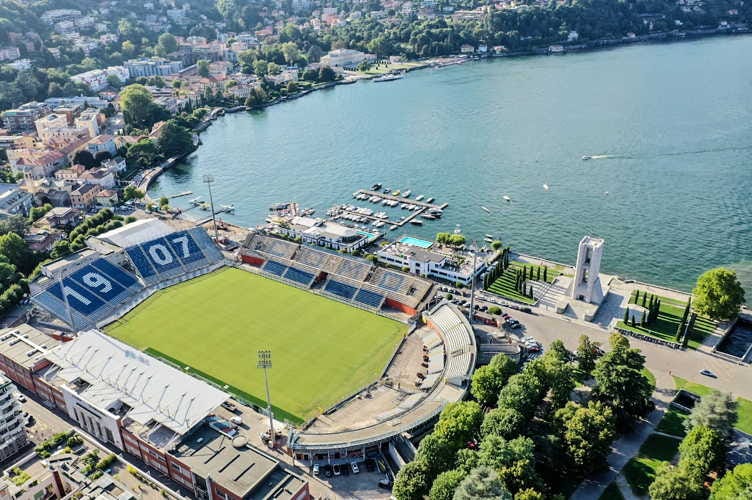Embracing identity: What we can learn from Liquid Death ☠️
With more entertainment 'on tap' than ever before, this article explores the parallels for sports properties and the brands who've thrived despite having their own product on tap, quite literally.
Not yet a subscriber? Join 1000+ sports business leaders from Fnatic to Formula 1 that read Sports Pundit every week to get impactful industry insights.
Read the commercial brochures of the majority of sports properties and you’ll see a recurring theme in their commercial identities.
Nearly every property hangs their hat on being at the “heart of the community” and offering a “combination of VIP hospitality and high-level brand exposure.”
This, however, isn’t exactly going to stand out to many sponsorship managers. It’s like a bottled water company trying to sell based only on the fact their drink is hydrating. It’s not going to cut it in any circumstance other than necessity.
Given the ample availability of tap water, and the fact that there are more sport and entertainment options on tap than ever before, both need to carefully consider exactly what they’re selling.
This is where the ingenuity of marketeers come in. Successful ones don’t sell us on the product. Instead, they focus on the beautiful story about the history, the location, the brand values.
Brand History
History is probably the strategy most frequently adopted by both sports properties and bottled water companies.
Evian water, which dates back to 1789, was discovered by French aristocrat who found his health began to improve upon drinking the natural mineral water from the French Alps. Evian have since used this history to make their brand synonymous with health and wellness.
There is no shortage of clubs boasting about their history, either. However, some have allowed their storytelling to become archaic, failing to invest in content to properly educate the next generation of fans in engaging ways.
Evian have managed to continually produce new, creative campaigns to tell their story. Leading sporting properites like Liverpool FC also cleverly toe this line of historic and futurist. However, Ryan Reynolds and Rob Mcelhenney’s reinvigoration of Wrexham AFC, the oldest professional club in Wales, is perhaps the best example of this.
Location, Location, Location
Another common strategy used by marketeers within sport and bottled water is to highlight the origin of the product.
FIJI Water do this better than most. Touted as the ‘Earth's Finest Water’, FIJI Water has leveraged the exotic location of the Fiji Islands to create a compelling narrative.
(Image Credit: Como 1907)
Location has also been critical factor in a number of recent investments into lower tier football clubs. Two prominent examples are Como 1907, who achieved promotion from the Italian third-tier last season, and UD Ibiza, which has risen from the fifth to the second division in Spain since its formation in 2015 - tapping into one of the most famous destination entertainment brands in the world.
But what if you’re not in the fortunate position of being situated in close proximity to a world-renowned tourist spot (or major city)? What if you’re a new team or you’re lacking the historic achievements of your rivals?
Follow Your (Audience’s) Passion
The answer is simple; Be like Liquid Death.
The water company was recently valued at $700m and is arguably one of the most interesting marketing case studies of the past decade.
The death-themed water brand has built itself into a highly successful business by not just tearing up the playbook, but by borrowing one from a completely different category.
Given their focus on targeting young men, they took their inspiration from categories that had traditionally (and successfully) targeted this demographic.
The result? A heavy metal and punk rock aesthetic more synonymous with energy drinks and craft beer.
It makes a lot of sense. Rather than shouting into the wind and competing with every other established brand out there, they identified an audience for their product which was under served and catered to them.
Venezia are a stand-out example of this from the world of football – as highlighted by Nicky Bandini on the Guardian’s Football Weekly podcast,
“It was a very deliberate idea of ‘we need to tap into the fact that we always have tourists in our city that these people are going to want to come to see a football game.'
What do you want to buy when you come to Venice? You could buy a T-shirt that says ‘I went to Venice’ or you can buy a football shirt that’s cool."



To do this, they replaced their front of shirt sponsor, instead emblazoning VENEZIA across the chest. Then, they switched suppliers for more control in creating ‘the most fashionable line of football merchandise on the planet.’ The club has even developed a social media strategy mimicking the aesthetic of glossy fashion magazines.
It doesn’t have to be high fashion or punk rock, though.
Forest Green Rovers FC, recognized by the UN for its work on sustainability, managed to double their sponsorship revenue due to brands wanting to align with their ethos. Crawley are attracting NFT fans, pitching themselves as ‘The Internet’s Team’. Whether this works or not is up for debate but the strategy is (in my opinion) to be commended.
Ultimately, as fans are provided with ever greater entertainment offerings, differentiation becomes more difficult. Creating a captivating narrative therefore is only going to become an even more crucial tiebreaker.
Brands have the power to pick their competitors. Bottled water brands should have competed with tap water yet marketeers managed to manipulate this situation to instead compete in the $1 trillion soft drink market.
With highly engaging sports and entertainment content now on tap, sports properties need to figure out how they too remain a valuable commodity.
Not yet a subscriber? Join 1000+ sports business leaders from Fnatic to Formula 1 that read Sports Pundit every week to get impactful industry insights.



